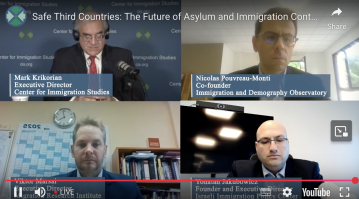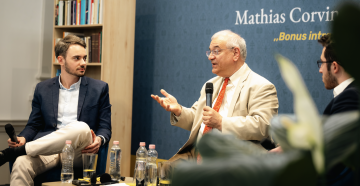The Center for Immigration Studies hosted a panel discussion in Washington, D.C. examining how immigration is used as a political, economic, and strategic tool by governments, non-state, and sub-state actors worldwide.
Whether through mass migration crises, policy-driven border surges, or the manipulation of refugee flows, immigration has become a powerful geopolitical weapon and a means of waging hybrid warfare. Examples have included Cuba’s use of the Mariel boatlift in 1980 or the more recent efforts by Belarus to coordinate illegal immigration to the EU.
The panel explored the concept of immigration warfare – how immigration is leveraged to gain political leverage; influence legislation, elections, and the economy; shape public opinion; and even destabilize a country. Discussion also covered how nations can respond to this growing challenge.
Retired Senior Foreign Service Officer Phillip Linderman discussed historical and current examples of the weaponization of mass migration to demonstrate how in the international instruments establishing the framework for current migration and asylum systems were articulated in a way that the human rights of migrants outweigh all other considerations. Through examples of past U.S. governments, Mr. Linderman argued that the critical factor in managing migration is the political leadership in the target country, because if it is strong, they can neutralize the countries weaponizing migrants.
Viktor Marsai, director of Migration Research Institute, Hungary, stressed the need to distinguish between the instrumentalization and the weaponization of migration. Instrumentalization takes advantage of a phenomenon of refugees fleeing to a country “naturally”, in attempts to escape armed conflict. On the other hand, weaponized migration creates crises artificially to deploy migration as a tool of hybrid warfare, such as the Belarus state bussing migrants to the EU border. Apart from politics, migration as hybrid warfare is also about the money: migrants paid $20-40,000 to the Belarussian government for the service. “We are making refugees”, said Mr. Marsai about the process whereby economic migrants go to Libya where the instability of the situation turns them into refugees.
Eric Ruark, director of research at NumbersUSA, cited the deliberate and willful decisions of the Biden administration to not secure the borders in support of his claim that the U.S. government “weaponized immigration against the American people”. An open society does and should not equal open borders within which illegal immigrants are pardoned to stay and damage the prospects of U.S. workers by undercutting wages.
Executive Director of the Center for Immigration Studies Mark Krikorian concluded that current asylum rules were made for post-war times for “a few Russian ballerinas every year”. It was easier for the U.S. to preserve its moral purity when dictatorships were cooperating in the sense of not letting their citizens leave those countries.
Phillip Linderman added that the human rights framework does not work for times when the main reasons for leaving countries are economic. Solzhenitsyn was a great victory to get, but now we do not have a system to deal with the current situation.
Viktor Marsai agreed and stressed once again the need for a leadership ready to tell rejected asylum seekers to go home. Eric Ruark seconded Mr. Marsai’s position and confirmed it is not a human right to migrate to the United States. Mark Krikorian concluded that the only way forward is externalization, with the clear message of “remain in Mongolia”, you are not getting in ever.
A recording of the discussion is available here



